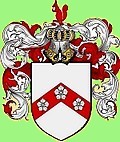 THE GILBERT FAMILY HISTORY
THE GILBERT FAMILY HISTORY
The Warbill-in-Tun pub, Warbleton
Website created by Richard Gilbert, last updated 18 August 2021.
MAIN NAVIGATION MAP
GILBERT; Waldron 1700s & earlier
|
HASSELL; Waldron --
GILBERT; Waldron 1800s --
GILBERT; to the USA
|
SODDY; Sussex & London --
GILBERT; Eastbourne 1800s --
MORRIS; Lewes & Eastbourne
|
HEWITT & HEDGEGOTT --
GILBERT; Eastbourne 1900 onwards --
CLEMENTSON; London
|
GILBERT; in the USA
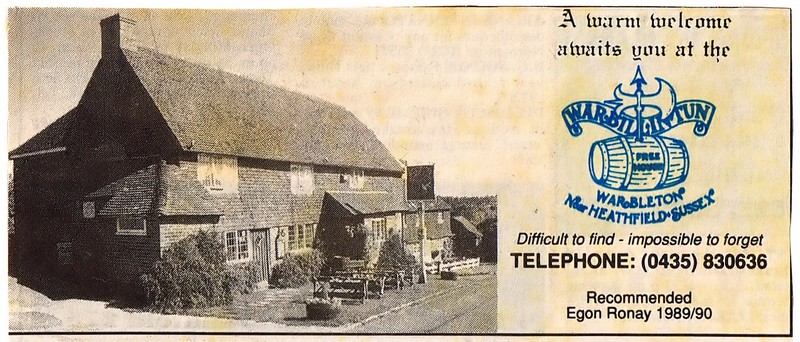
1980s advertisement

The Warbill-in-Tun pub (or War-Bil-in-Tun, or War-Bill-in-Tun) at Warbleton, near Heathfield in East Sussex, was one of the oldest pubs in the country, having served ale to the builders of Warbleton Church, whose first rector took office in around 1180. The name is, of course, a pun on the name of the village and is represented on the pub's sign by a battle-axe in a barrel. It also hints that the village may have earlier been named 'Warblington'. It has now ceased to be an inn, and is a domestic residence.
According to the occupants in 2015, every indication points to the present building being built in the early 1500s. The earliest definitive record relates to a will of a Mr Cheeseman in the 1600s who left the property to a benefactor. All indications are that, although the front clearly has three separate entrance doors, this was not a building divided into three individual parts. Although it was let at one time as a property with considerable acreage, it appears that it was built with the intention of it being an Ale House, with a huge cellar below. Through the years parcels of land were sold off and the original sixteen acres has long gone.
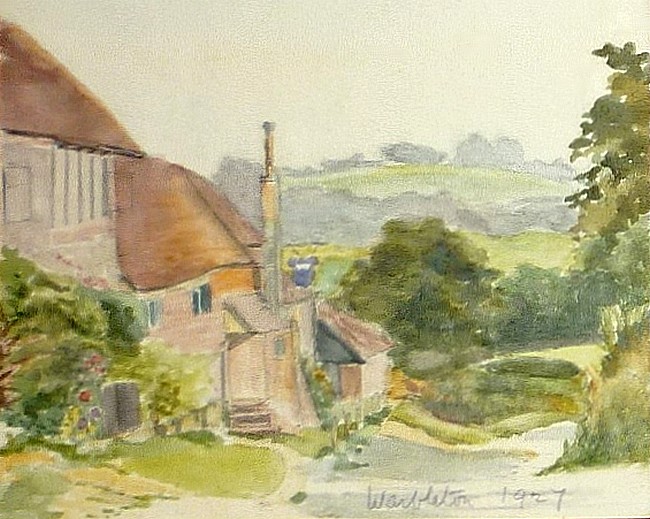
A watercolour painting of Warbleton with the Warbill on the left, by Mary Gilbert (1889-1976) in 1927.
The original is in the archive of the Towner Art Gallery, Eastbourne.
The connection with the Gilbert family begins in the late 18th century when the pub and estate was owned by John Waters of Crowhurst who leased it to various tenants, among which was John Jennings (and his tenants and under-tenants). In 1745 John Waters married Elizabeth Gurr in Crowhurst and they started to produce a large family, including Sarah Waters, born in 1749. When Sarah was 22 years old in 1781 she was married in Crowhurst to John Jennings, the lessee of her father's estate in Warbleton, and possibly innkeeper at the Warbill-in-Tun. Four years later, in 1785, their daughter Maria Jennings was born.
Meanwhile in 1789 William Gilbert (c1738-1800) married his second wife Mary Ashdown. He was 51, and she was 24. They had two sons (William in 1790 and Thomas in 1792) and one daughter, Mary in 1798. In 1796 John Waters of Crowhurst died aged 77. He left 4/5th of his Warbleton estate (which included various outhouses, shops, buildings, gardens etc.) to his daughter Sarah (now married to John Jennings), and 1/5th to his grandaughter Maria, aged 11.
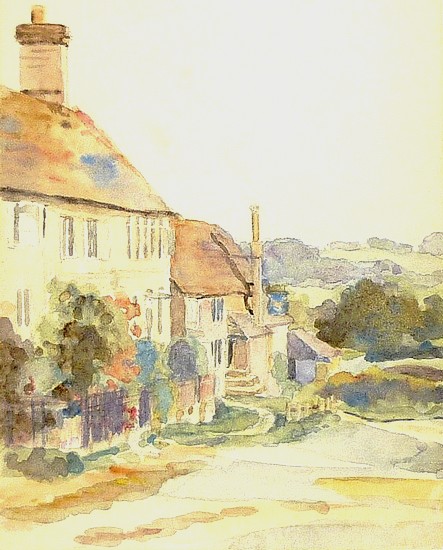
1927 was clearly a good year for painting!. A watercolour of Warbleton by Charlotte Gilbert (1886-1976) in 1927.
The original is in the archive of the Towner Art Gallery, Eastbourne.
Around 1810 young William Gilbert (born in 1790) started courting Maria Jennings, by this time aged 25 and, according to the recollections of William's brother David, a barmaid at her parents' inn. That courtship was to last 12 years, but eventually on 6 August 1822 William and Maria were married at Waldron. William and Maria had two boys, yet another William born in 1823, and David born in 1825. Maria still held the 1/5th share of the Warbleton estate and, when her father John Jennings died in 1829, the other 4/5th passed to her mother Sarah Jennings. But at some time around 1830 the property held by Sarah was "sold by devisees" to William Gilbert.
 To details of the family of William Gilbert (1790-1844) and Maria Jennings
To details of the family of William Gilbert (1790-1844) and Maria Jennings
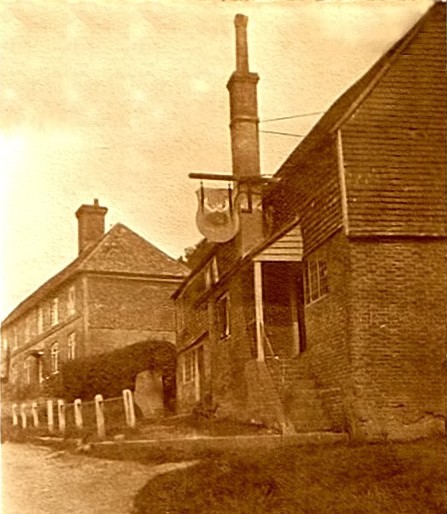
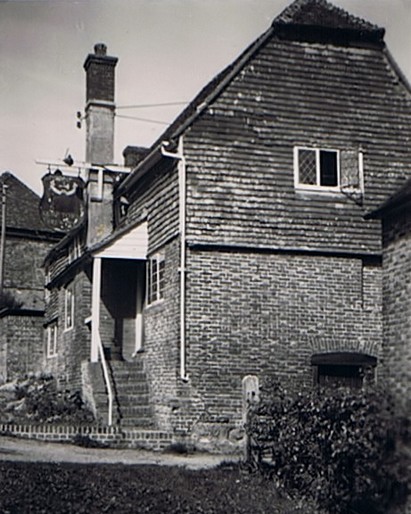
The Warbill-in-Tun pub from the south, taken in 1927 and again in 1953 probably by Richard Gilbert.
William now held 4/5th, and his wife Maria the remaining 1/5th. However Maria died in June 1834 aged 49 and left her 1/5th share to her elder son William, aged 11. Five months later in November 1834 William (1790-1844) wrote a will also leaving his 4/5th of the estate to his son William (1823-1874, who already owned the other 1/5th), but in a trust to be administered by his brother Thomas. This required that the estate should be sold as soon as possible after young William reached the age of 21. There is apparently no evidence that the other son, David, was mentioned in this arrangement, although some reports suggest that the proceeds of the sale was intended to be divided equally between the two boys.
In June 1844 William Gilbert died, aged 54, and the requirements of the trust were therefore activated with Thomas as trustee. However this arrangement only lasted for two months, as young William attained the age of 21 in the August, triggering the process of sale. The will was proved at Lewes on 16 November 1844. The finer details of this process are difficult to envisage, but it took a year to resolve and seems to have been arranged amicably. The 1/5th and the 4/5th portions were now added together and the entire estate sold to a William Hallett. The conveyance of the pub and the rest of the estate was dated 31 December 1845 and was signed by William Gilbert, his uncle and trustee Thomas Gilbert, and others (not Gilberts).
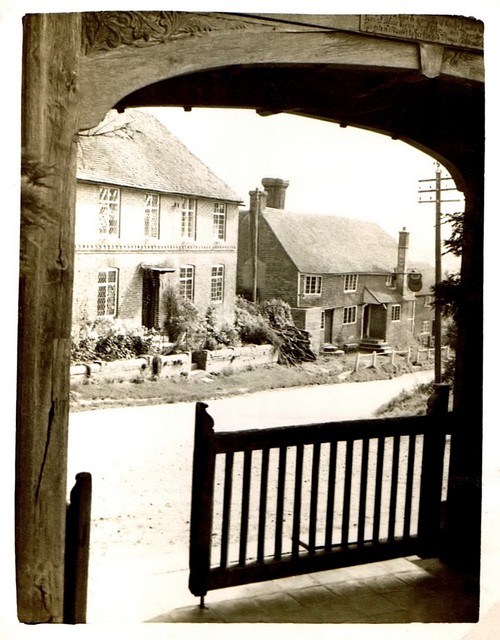
The pub seen from the church gate. Probably taken by Richard Gilbert in 1953.
Again there was no mention of David Gilbert in the conveyance, but it is believed that the proceeds from the sale were divided equally between William and David. This ended the Gilbert family involvement with the pub and property at Warbleton. William went into the cornchandling business in Hastings but later got married and became a goods inspector on the railways in Portsmouth. Uncle Thomas emigrated to the USA in 1851, and David took an apprenticeship as a miller at Tickerage Mill, then married and moved to Eastbourne to start the family bakery business.
Not surprisingly, there are legends of smuggling, and allegedly a ghostly lady in white wanders the building. The pub changed its name for a few years to the Black Duck, but then ceased trading and became a private house, regaining its original name Warbill-in-Tun.
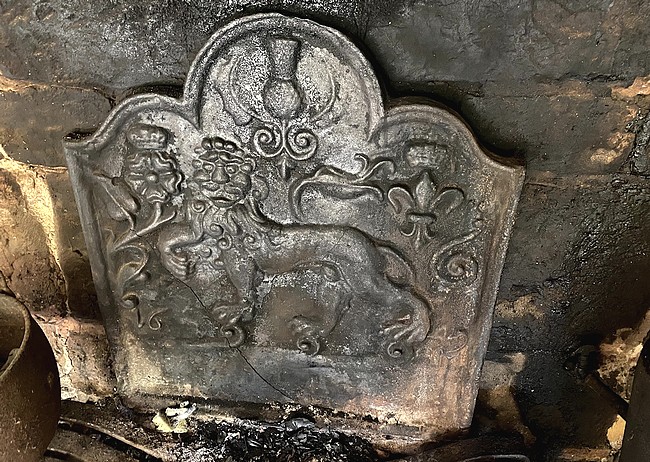
Cast iron fireback dated 1649. (Geraint Lewis)
The 800-year old inglenook fireplace contains a spectacular iron fireback dated 1649. Several firebacks of this Royalist design (featuring a heraldic lion, a thistle, a rose and a fleur-de-lys) are known to exist. They are thought to have been cast in Sussex and possibly at the Waldron iron furnace. A similar example is in the Victoria & Albert Museum.
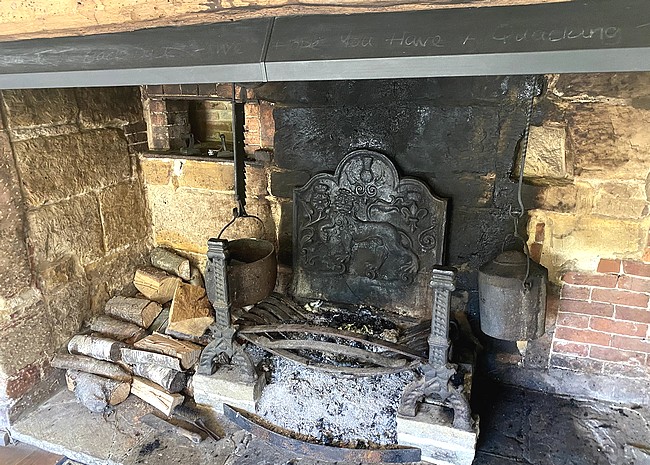
The splendid inglenook fireplace in the bar. (Geraint Lewis)
The fireplace has comforted many significant visitors over the years. For example, The Beatles were common patrons in their heyday, when their manager, Brian Epstein, lived only 200 yards away. John Lennon's Rolls Royce could sometimes be seen parked outside, with Jimi Hendrix propping up the bar.
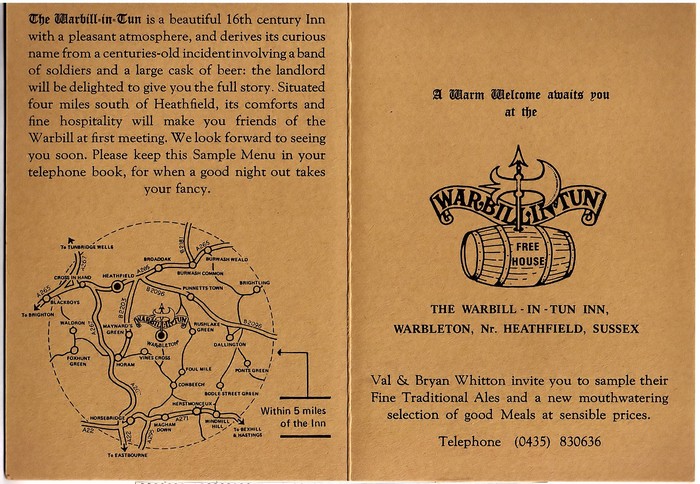
1990s advertising card
Information was gleaned from the deeds of the pub examined by the Kemp Town Brewery, Brighton in 1963, the book "Alehouses" by June Williams, publication No.14 of the Warbleton & District History Group, Geraint Lewis, and the family history and autobiography written by Richard Gilbert.
